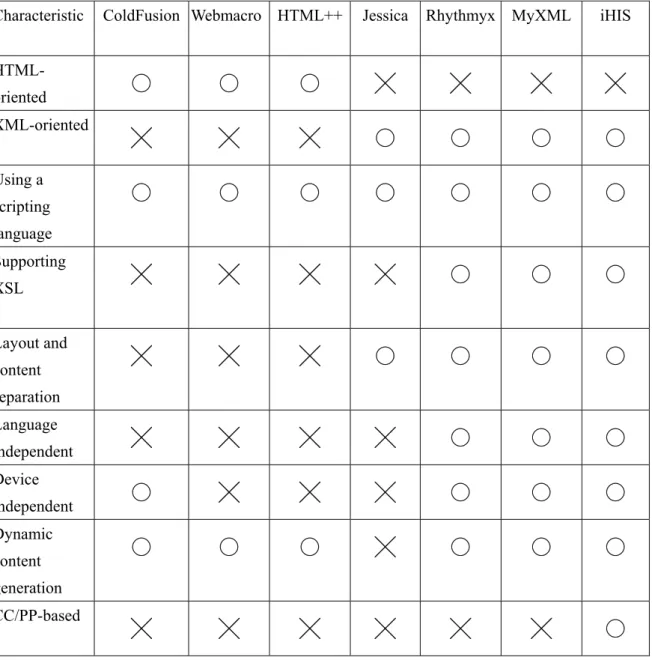Design and Implementation of an Integrated Home Information and Service System
全文
(2) Abstract – In this paper, we present an integrated Home Information and Service (iHIS) system. The iHIS system consists of the following components: Home Information Server, MBL Gateway, and CC/PP Repository. The system allows us to flexibly access non-integrated home information and services, and to easily control various Information Appliances (IA) at home under various network environments and different client devices. Our system uses a Simple CC/PP protocol with Java to exchange device profiles efficiently. And this system has two key sub-components: (1) Personalization Manager, which is a tool used by users to personalize the services that the users want to access and to manage the services easily and (2) Content Transformer, which transforms an XML document content to an adaptive form, according to user preferences and device capabilities. The Content Transformer also generates intermediate stylesheets. The intermediate stylesheets can resolve the problem of page layout inflexibility. The generated pages will be more adaptive to network bandwidth and device capabilities. Our design accomplishes the concept of an adaptive and personalized home service environment that can be accessed across various network boundaries and different client devices. Compared to our system, existing systems have some problems, such as no separation between layouts and contents, and lack of support for dynamic contents generation and device independence. There are several features in our system: generating intermediate stylesheets, which make the generated pages more flexible and adaptive to various networks and different devices, decreasing access time and increasing system performance, and creating personalized contents for each user. We have implemented our system, which can adapt home service contents to various client devices with user agent profiles under different network environments. Evaluation shows that our system can provide adaptive, personalized home information and services to match network bandwidth and device capabilities. Index Terms – UAProf, XSL/XSLT, CC/PP, content adaptation, device capability. 1.
(3) I. INTRODUCTION In recent years, Internet and wireless Internet have evolved quite dramatically. As far as Internet is concerned, HTML is used to compose web pages. HTML has several drawbacks, such as no structures and grammars, the inflexibility of page layout, and lack of reusing information of pages [1]. Due to the drawbacks described above, supporting multiple-view formats (e.g., HTML, WML, and XHTML, etc.) is hard to achieve and is still an open issue. It is a big challenge to control, manage, access, request, deploy, handle, and recover the home service effectively using different devices. Because of the flexibility and extensibility of XML, it provides a standard way of searching, displaying, manipulating, and exchanging data on the web [2]. When we generate web contents, it is important to make the web contents generated in a device independence way [3]. To reach this goal, the W3C has defined the XML and Extensible Stylesheet Language (XSL) to support static or dynamic content generation. The WAP Forum defines the User Agent Profile (UAProf) specification, which is focused on capturing classes of device capabilities and preference information [4]. These classes include the hardware and software characteristics of the device as well as information about the network to which the device is connected. A user agent profile is distinct from a user preference profile, which would contain application-specific information about the user for content selection purposes [5]. The user agent profile uses the Resource Description Framework (RDF) schema and vocabulary [6] according to the Composite Capability and Preference Profiles (CC/PP) [7] definition.. II. RELATED WORK A. Problems with CC/PP Protocol We found some problems that arise with the use of CC/PP. CC/PP tries to describe every 2.
(4) possible configuration of the client machine including all little details. CC/PPex defines three additional. headers:. Profile,. Profile-Diff. and. Profile-Warning.. Such. fine-grained. descriptiveness will complicate the development of web services, because the web server will fetch all the necessary descriptions that are specified by the client, apply the required profile with different Profile-Diff and maintain profile caches [8]. In addition, having a separate description for every single model of client devices will generate a lot of extra traffic and the cache will require a lot of storage for fetching and storing duplicate descriptions, which is not desirable in wireless networks [8]. B. Simple CC/PP Protocol with Perl In order to reduce the complexity of the CC/PP framework, a protocol called Simple CC/PP [8] was presented. This protocol uses a lightweight scheme for negotiating client’s capabilities in the context of end-to-end content adaptation for wireless web access [8]. The concept also suggests that for the purpose of content negotiation all clients could be classified into a few relatively large categories. It creates simplified capability descriptions in advance. The Profile-Diff header, which supports for different versions of CC/PP descriptions are not needed and is not implemented. So there is no need for generating extra HTTP requests for fetching the capabilities and there is no need for caching data [8]. This Simple CC/PP module was implemented in Perl, but the content transformation was implemented in Java. However, using two kinds of programming languages in the same system will reduce the system performance.. III. THE ARCHITECTURE OF IHIS SYSTEM A. Simple CC/PP Protocol with Java The simple CC/PP protocol with Perl [8] has a problem of using two different programming languages that may reduce the system performance. To solve this problem and focus on 3.
(5) wireless/home environment, we replace the CC/PP protocol with the Simple CC/PP protocol with Java. The original CC/PP describes every device capabilities in a very detailed and complicated way. In our design, each client device is classified and belongs in one of the categories. The rules of each category are according to the client device capabilities and the type of the network. This design can decrease transmission of data and reduce access time compared to the CC/PP protocol. We define the following four categories: 1.. PCs/Notebooks with 100Mbps broadband connections,. 2.. PCs/Notebooks with 56Kbps dial up connections,. 3.. PDA/Handheld devices with 11Mbps wireless connections, and. 4.. WAP mobile phone devices.. We assume that family members can only use these four ways to connect to the server. However, we can add a new category if needed. It will not affect the underlying idea behind our framework. B. The Overall Environment of the iHIS System Our system can get the information about the capabilities and characteristics of the client device and the type of the network that the client device uses to communicate with the server. The overall environment of our system, the integrated Home Information and Service (iHIS) system, is shown in Figure 1. It is separated into three parts: Client Devices, iHIS System, and Information Appliances. 1) Client Devices Client devices include all kinds of end-user devices, such as notebooks, mobile phones, conventional telephones, personal digital assistants (PDAs), and personal computer (PC) as long as these devices can be connected to Internet or the wireless network. The most important thing is that the end-user device must provide its device information to the iHIS system using the Simple CC/PP with Java, so that the system will find out what type the client 4.
(6) device is and reply the most suitable content to the client device. 2) iHIS System The iHIS system receives the request message from the client device and deal with all kinds of situations. It comprises three parts: Home Information Server, MBL Gateway [9] and CC/PP Repository. The iHIS system is placed between the public network and the home network to provide or monitor the home information and services. The following sections give a brief description of each part.. a). Home Information Server. The Home Information Server provides the information of family members and information appliances. It also creates personalized views of the same web page based on each user’s favorite. The Home Information Server has a Home Portal and the Home Portal is an entrance for the client device to access home information. The Home Portal provides services, including family members information and IA control interfaces. This portal can be accessed with WML, XML, XHTML and HTML, so the user could use a WAP-enabled mobile device, PC, laptop or PDA with browser to access the portal information.. b). MBL Gateway. The MBL Gateway can be integrated to the Home Information Server or run independently. The MBL Gateway has the following functions: ˙Ptotocol translation: It translates a protocol stack, such as WAP 1.x protocol stacks to the WWW protocol stack. And it converts WAP contents into compact encoded formats to reduce the size of data transmitted over the wireless network. ˙Content transformation: The MBL Gateway can create different web pages for different users using the same contents.. 5.
(7) c). CC/PP Repository. The UAProf provides a mechanism for describing the capabilities of client devices and the preferences of users. Enhanced for the WAP 2.0 release, it is based on the CC/PP work of the W3C, UAProf supports the client-server transaction model by sending client and user information to servers with the request [11]. The CC/PP Repository stores the UAProf (e.g., document profiles, profile process rules, device profiles and the default content negotiation) in a form based on XML/RDF that may be referenced by and incorporated into a newly created profile. The RDF is used to describe profiles associated with documents or other objects that can be named via a URI [7]. 3) Information Appliances The Information Appliances (e.g. printer, digital TV, refrigerator, microwave oven, etc.) can be connected to the home network, using the IEEE 1394, IEEE 802.11b, Bluetooth, or Ethernet. The traditional SOHO devices (e.g., PC, laptop, workstation, etc.) can also be connected to the SOHO network using IEEE 1394, IEEE 802.11b, Bluetooth, or Ethernet, so that users can use their client devices to access and control IAs or SOHO devices remotely via the Home Portal. C. The Organization of the iHIS System The iHIS system contains the following major components: Message Filter, WAP Protocol Converter, Content Transformer, Personalization Manager, Service Manager, Database Manager, Service Database, and CC/PP Repository as shown in Figure 2. The following subsections give a brief description of these components except the CC/PP Repository, which has been described in the previous section. Note that the Message Filter, WAP Protocol Converter and Content Transformer belong to the MBL Gateway, and the Personalization Manager, Service Manager, Database Manager and Service Database belong to the Home 6.
(8) Information Server. 1) Message Filter The Message Filter collects the entire message sent from the client device and decides what to do next according to the client device CC/PP request header. If the Message Filter analyzes the CC/PP request header and knows that the client device is a WAP mobile device, then the request message will be sent to the WAP Protocol Converter first and then the Content Transformer. If not, the request message will be sent to the Content Transformer directly. 2) Content Transformer The Content Transformer transforms the XML documents, which are received from Home Information Server, into different kinds of contents according to the content transformer process procedure, as shown in Fig. 3. It translates the contents according to the device profiles, document profiles, member preferences, network bandwidth and original web pages. The Content Transformer will get the CC/PP request header from the client device and analyze the type of the device. It will check if the client device has accessed this web page before. If the answer is yes, it accesses the cache and replies the result page from the cache directly. Otherwise, it retrieves the device profile to analyze the capability of the client device. The transformer gets the document profile and device profile stylesheets to gain the device browser preference and the default definition to generate the intermediate stylesheets. Finally, it combines the XML page content, picture data and intermediate stylesheets to generate the result page. Then the Content Transformer sends the result page to the client and caches the result page. 3) WAP Protocol Converter The WAP Protocol Converter translates requests from a wireless protocol stack (e.g., the WAP 1.x stack - WSP, WTP, WTLS, and WDP) to the WWW protocol stack (HTTP and TCP/IP), and performs DNS lookups [4]. If the client devices are WAP mobile devices, and 7.
(9) the Message Filter will send request messages to this WAP Protocol Converter first, then send the request messages to the Content Transformer. Currently, the WAP 2.0 has been developed and WML2 is the markup language. WAP 2.0 supports TCP/IP and HTTP, so the WAP Protocol Converter is for WAP 1.x only. 4) Service Manager and Service Database The Service Manager handles information appliance services and information of family members. It is used to manage, configure, and maintain services. The information appliance services are accessed and controlled via the Home Information Server. All the information of family members is collected in the Service Database. The Service Database is an XML database, which is the ideal database for describing, managing, and integrating information within the home without compromising security, availability, or performance [2]. 5) Database Manager The Database Manager is used to manage the web pages and CC/PP Repository. Since the CC/PP Repository is an XML database, it can also be a Database Management System (DBMS) that allows storing, integrating, and exchanging data in XML form. This guarantees high performance and scalability since an extra layer to convert data to and from XML is not needed. Furthermore, unexpected changes in the format of a data stream, which is a key feature of XML, can be processed based on the embedded metadata. 6) Personalization Manager One of the goals of the iHIS system is to enable the presentation of different views of the same web page to different client devices. We wish to avoid that every member of the family receives the same identical web page. The Personalization Manager is a tool to personalize the service that the user wants to access, and it makes the service simple to manage and easy to customize. The Home Portal provides a simple interface that allows the user to create their own presentation for mobile devices or PCs. 8.
(10) IV. IMPLEMENTATION The iHIS system has been implemented and was based on the Microsoft Windows Internet Information Service (IIS) under Microsoft Windows 2000. All of the development tools are compatible with the Microsoft Windows platform. The following hardware equipments were used: Acer TravelMate 351TE Notebook with Intel Pentium 3 – 700, Z-Com XI-1450V Access Point, Compaq iPAQ H3800 Pocket PC, Compaq iPAQ Networking 11Mbps Wireless PC Card and Motorola P7689 WAP mobile phone. In CC/PP specifications, the actual capability description can be placed at the locations specified by URIs described in the CC/PP header. So the capability descriptions we defined are putting in a single file, which can be retrieved by a location string written in URI format [8]. When we want to get capability descriptions of a device, we can put the names of capability descriptions after the location string so that we can get the part of capability description we want. The Profile-Diff support of the CC/PP description in our system is not needed, so we didn’t implement it. Because IAs are not available at this time, we have developed several IA simulators that help us to evaluate our system. Figure 4 shows a screenshot of PC/Notebook with 100 Mbps broadband connection. Figure 5 show a screenshot of Compaq iPAQ H3800 Pocket PC with 11 Mbps wireless connection and screenshots of WAP mobile device with 9.6 Kbps dial up connection. These figures show how content adaptation is performed based on device capabilities and network characteristics. The remote control of information appliances (e.g., opening an air conditioner, closing some lights, recording a TV program, etc.) has also been demonstrated. We can preset the temperature of the living room when we are about to go home, so that we can feel cool when 9.
(11) we arrive home in a hot weather.. V. EVALUATION AND DISCUSSION We first evaluate the Content Transformer of the iHIS system. Table 1 shows the data sizes of original XML page, device profile, stylesheets, and pictures of different profiles in the database. Profile 0 is the original content accessed by a notebook with the 100 Mbps broadband connection. Profiles 1, 2, 3, and 4 are based on the following categories, respectively: Notebook with 100 Mbps broadband connection, Notebook with 56 Kbps dial up connection, Compaq iPAQ H3800 Pocket PC with 11 Mbps wireless connection, and Motorola P7689 WAP mobile device with 9.6 Kbps dial up connection. Table 2 shows the characteristics of result page under different network connections and profiles. This peoplelist.htm result page was shown in Fig. 4. We can see that the result page has been adapted according to the network bandwidth and device profiles. For example, the hardware devices of profile 1 and 2 are the same notebooks. The main difference between profiles 1 and 2 is the network bandwidth (100 Mbps vs. 56 Kbps). As a result, the difference in data sizes (135 KB vs. 5.58 KB) between these two adapted result pages is quite large. However, there is no big difference in access time (1 sec. vs. 2 sec.) between profiles 1 and 2. This means that we can get balance between the network bandwidth and data size. Next, we evaluate the iHIS system by comparing it with some existing systems and tools. These tools include ColdFusion, Webmacro, HTML++, Jessica, Rhythmyx, and MyXML. We compare our system with these tools based on the following characteristics: HTML-oriented or XML-oriented; Using a scripting language; Supporting XSL technologies; Layout and content separation; Language independent; Device independent; Dynamic content generation; CC/PP-based. 10.
(12) In Table 3, we show the comparison between different content transformation systems [8][13]. From Table 3, we can see that: ColdFusion, Webmacro and HTML++ focus on generating dynamic contents into web pages; Jessica focuses on layout and content separation; Rhythmyx focuses on maintaining an effective web content; MyXML focuses on device independent, which is based on layout and content separation, and dynamic content generation. In sum, our iHIS has the following features: Using intermediate stylesheets, which make generated pages more flexible and more adaptive; Reducing access time and increasing system performance; Transforming contents to suit each device; Generating dynamic contents; Supporting various devices and protocols; Create personalized home portal and content service for each user. The results show that superiority of the iHIS system.. VI. CONCLUSIONS AND FUTURE WORK In this paper, we have designed and implemented an integrated Home Information and Service (iHIS) system that can match device capability and user preferences to generate adaptive contents. Using CC/PP, a client device can receive an adaptive web page, which is suitable for the user. Our system uses a Simple CC/PP protocol with Java to exchange device profiles efficiently. The two key sub-components, Personalization Manager and Content Transformer, help us to achieve the goal of providing adaptive home services to match user preferences, network bandwidths and device capabilities. Evaluation has shown that our iHIS System is superior compared to other existing systems. The VoiceXML Browser based on web and telephony systems may be a killer application in the future. The SyncML Initiative is sponsored by leading wireless companies. It is used to synchronize data between devices. We may integrate the above two technologies to our system in the future.. 11.
(13) REFERENCE [1] C. Kerer, E. Kirda, M. Jazayeri, and R. Kurmanowytsch, “Building and Managing XML/XSL-Powered Web Sites: an Experience Report,” in Proc. of the 25th Annual Int. Conf. on Computer Software and Applications, Oct. 2001, pp. 547-554. [2] J. Bakker and R. Jain, “Next Generation Service Creation Using XML Scripting Languages,” in Proc. of IEEE Int. Conf. on Communications, Apr.- May 2002, pp. 2001-2007. [3] E. Kirda, “Web Engineering Device Independent Web Services,” in Proc. of the 23rd Int. Conf. on Software Engineering, May 2001, pp. 795-796. [4] WAP Forum Home Page, http://www.wapforum.org/. [5] WAP Forum, “User Agent Profiling Specification (UAProf),” WAP Forum Proposed Version, http://www.wapforum.org/, May 2001. [6] W3C Consortium, “Resource Description Framework (RDF) Schema Specification 1.0,” W3C Candidate Recommendation, http://www.w3.org/TR/2000/CR-rdf-schema-20000327, Mar. 2000. [7] F. Reynolds, J. Hjelm, S. Dawkins, and S. Singhal, “Composite Capability/Preference Profiles (CC/PP): A User Side Framework for Content Negotiation,” W3C Note, http://www.w3.org/TR/1999/NOTE-CCPP-19990727, July 1999.. 12.
(14) [8] V. Korolev and A. Joshi, “An End-End Approach to Wireless Web Access,” in Proc. of Int. Conf. on Distributed Computing Systems, Apr. 2001, pp. 473-478. [9] MBL Gateway, http://www.cis.nctu.edu.tw/~gis88518/wap1/. [10] E. Kirda and C. Kerer, MyXML Project Home Page, http://www.infosys.tuwien.ac.at/myxml/, 1999-2000. [11] WAP Forum, “WAP 2.0 Technical White Paper,” http://www.wapforum.org/, Aug. 2001. [12] W3C Consortium, “Resource Description Framework (RDF) Model and Syntax Specification,” W3C Recommendation, http://www.w3.org/TR/1999/REC-rdf-syntax-19990222, Feb. 1999. [13] C. Kerer, E. Kirda, and M. Jazayeri, “Experiences in Engineering Flexible Web Services,” IEEE Trans. Multimedia, vol. 8, pp. 58-65, Jan.-Mar. 2001.. 13.
(15) Fig. 1. The overall environment of the integrated Home Information and Service (iHIS) system.. 14.
(16) Fig. 2. The organization of iHIS system.. 15.
(17) R equest. c h e c k if h a s th e c a c h e d d a ta. No. O r ig in a l XML page. G e t d e v ic e p r o file. P ic tu r e d a ta. Yes. G e t d e v ic e p r o file s ty le s h e e ts. G et docum ent p r o file. G et r e s u lt p a g e. G e n e ra te in te r m e d ia te s ty le s h e e ts In te g r a te th e p a g e c o n te n t. R esponse. G e n e ra te r e s u lt p a g e. S to r e r e s u lt page. Fig. 3. The content transformation procedure.. 16.
(18) Fig. 4. A screenshot of PC/Notebook with 100 Mbps broadband connection.. Fig. 5. A screenshot of Compaq iPAQ H3800 Pocket PC with 11 Mbps wireless connection and screenshots of WAP mobile devices with 9.6 Kbps dial up connection. 17.
(19) Table 1. The data sizes of original XML page, document profile, device profile, stylesheets, and pictures in various profiles. Profile. Original XML page. Document profile. Device profile. Stylesheets. Pictures. Profile 0. 3.13 KB. 6.00 KB. 853 B. 5.48 KB. 103 KB. Profile 1. 3.13 KB. 6.00 KB. 961 B. 7.00 KB. 92.1 KB. Profile 2. 3.13 KB. 6.00 KB. 1.00 KB. 3.26 KB. 30.7 KB. Profile 3. 3.13 KB. 6.00 KB. 1.24 KB. 6.53 KB. 30.7 KB. Profile 4. 3.13 KB. 6.00 KB. 1.11 KB. 4.21 KB. 0 KB. Table 2. The characteristics of result page under different network connections and profiles. Profile. Screen size. Bandwidth. Color. Picture Access time. Data size. Profile 0 800 x 600 100 Mbps broadband (Original) pixels connection. Yes. Yes. 1.5 Sec. 189 KB. Profile 1 800 x 600 100 Mbps broadband (Adaptive) pixels connection. Yes. Yes. 1.0 Sec. 135 KB. Profile 2 800 x 600 (Adaptive) pixels. 56 Kbps dial up connection. Yes. Yes. 2.0 Sec. 5.58 KB. Profile 3 240 x 320 (Adaptive) pixels. 11 Mbps wireless connection. Yes. Yes. 2.5 Sec. 48.2 KB. Profile 4 120 x 360 (Adaptive) pixels. 9.6 Kbps dial up connection. No. No. 3.0 Sec. 3.31 KB. 18.
(20) Table 3. Comparing different content transformation systems. Characteristic HTMLoriented XML-oriented Using a scripting. ColdFusion Webmacro HTML++. Jessica. Rhythmyx MyXML. iHIS. ○. ○. ○. ╳. ╳. ╳. ╳. ╳. ╳. ╳. ○. ○. ○. ○. ○. ○. ○. ○. ○. ○. ○. ╳. ╳. ╳. ╳. ○. ○. ○. ╳. ╳. ╳. ○. ○. ○. ○. ╳. ╳. ╳. ╳. ○. ○. ○. ○. ╳. ╳. ╳. ○. ○. ○. ○. ○. ○. ╳. ○. ○. ○. ╳. ╳. ╳. ╳. ╳. ╳. ○. language Supporting XSL Layout and content separation Language independent Device independent Dynamic content generation CC/PP-based. 19.
(21)
數據
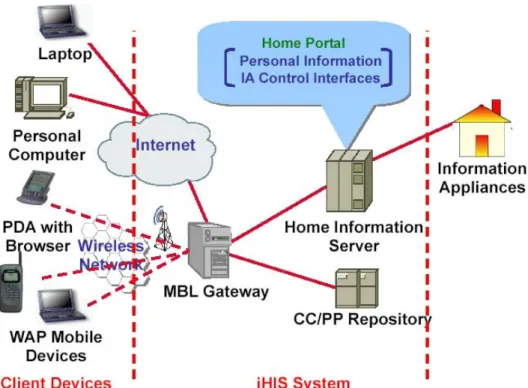
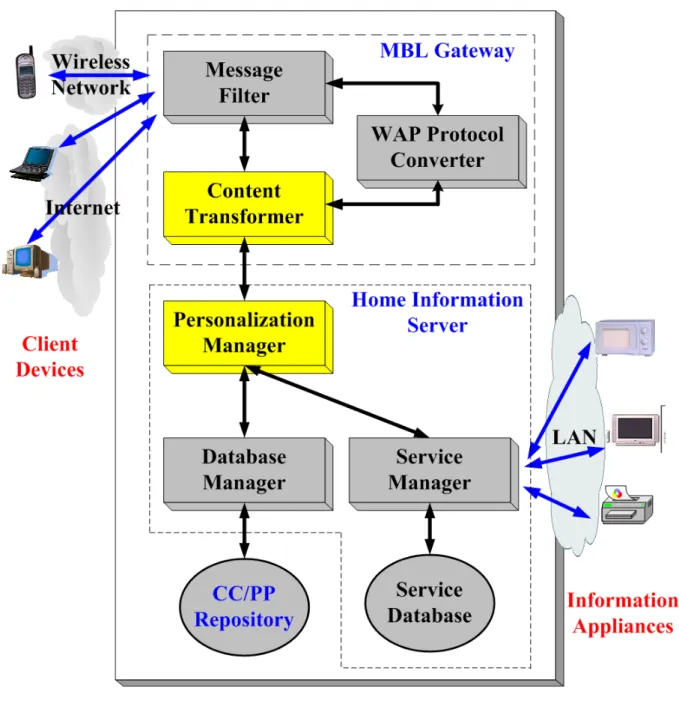
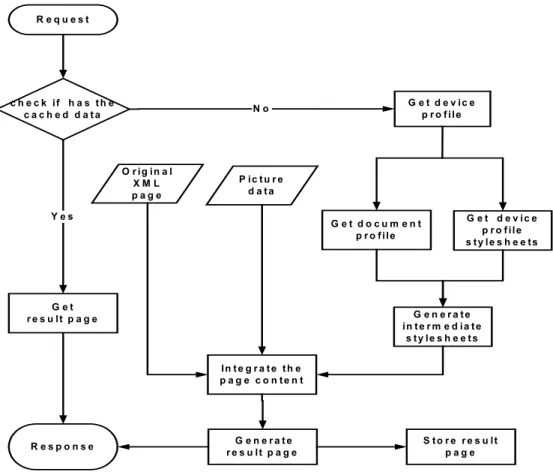
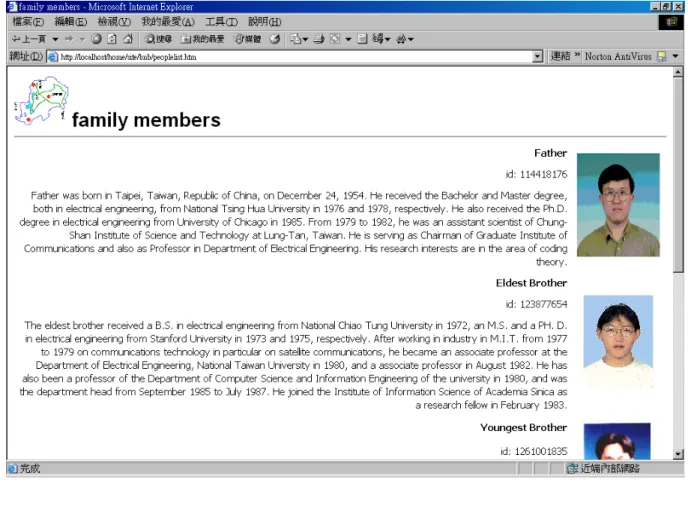
相關文件
The Centre for Learning Sciences and Technologies (CLST), The Chinese University of Hong Kong (CUHK) launched the!. EduVenture ® learning system, which has been well received by
Teacher / HR Data Payroll School email system Exam papers Exam Grades /.
Classifying sensitive data (personal data, mailbox, exam papers etc.) Managing file storage, backup and cloud services, IT Assets (keys) Security in IT Procurement and
5/11 Network Address Translation and Virtual Private Network. 5/18 System configuration and
• You can make good use of this opportunity and become more aware of the importance of teaching information texts with an explicit emphasis on understanding the features of academic
5/4 System configuration and log systems 5/11 Network Address Translation (NAT) . and Virtual Private
and/or make predictions about the future behaviour of a system in the real world. ● requires the modeller to be creative and make choices, assumptions,
We shall show that after finite times of switching, the premise variable of the fuzzy system will remain in the universe of discourse and stability of the adaptive control system

